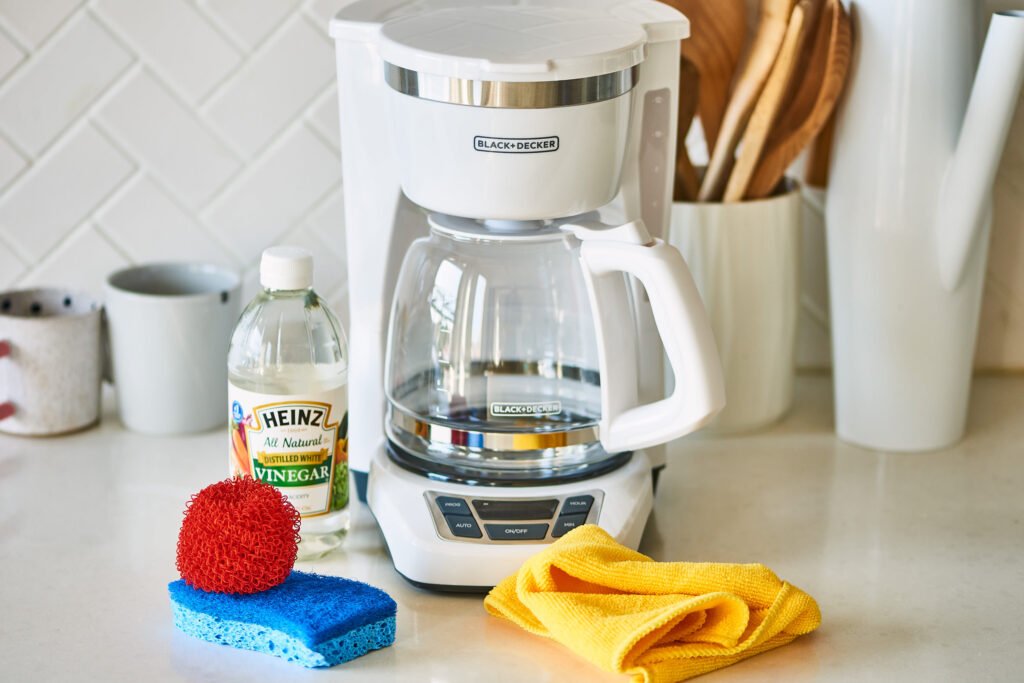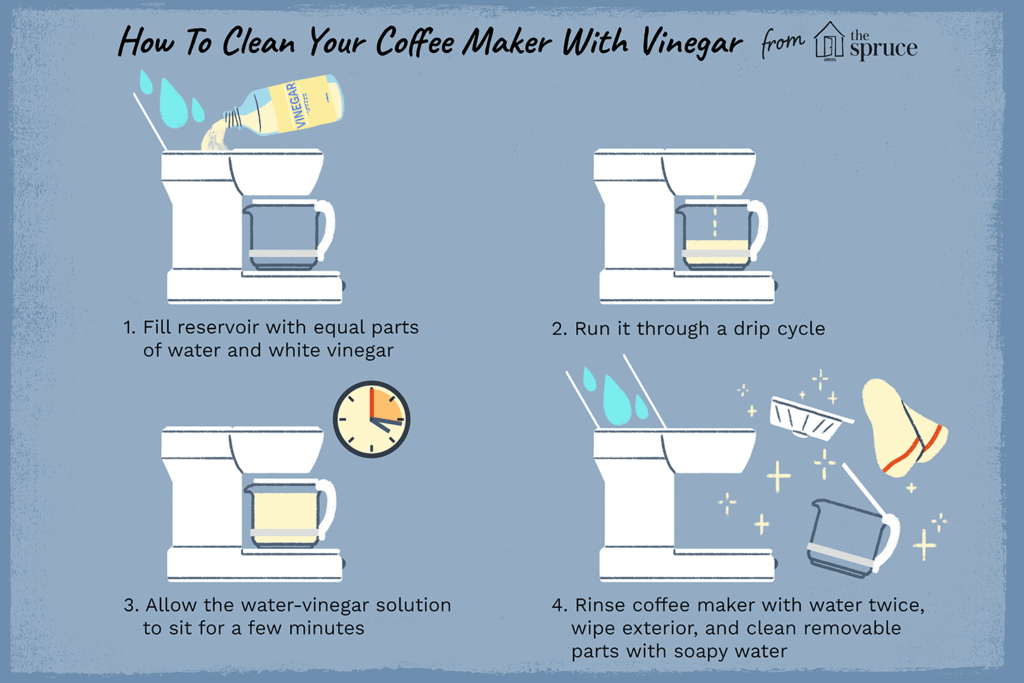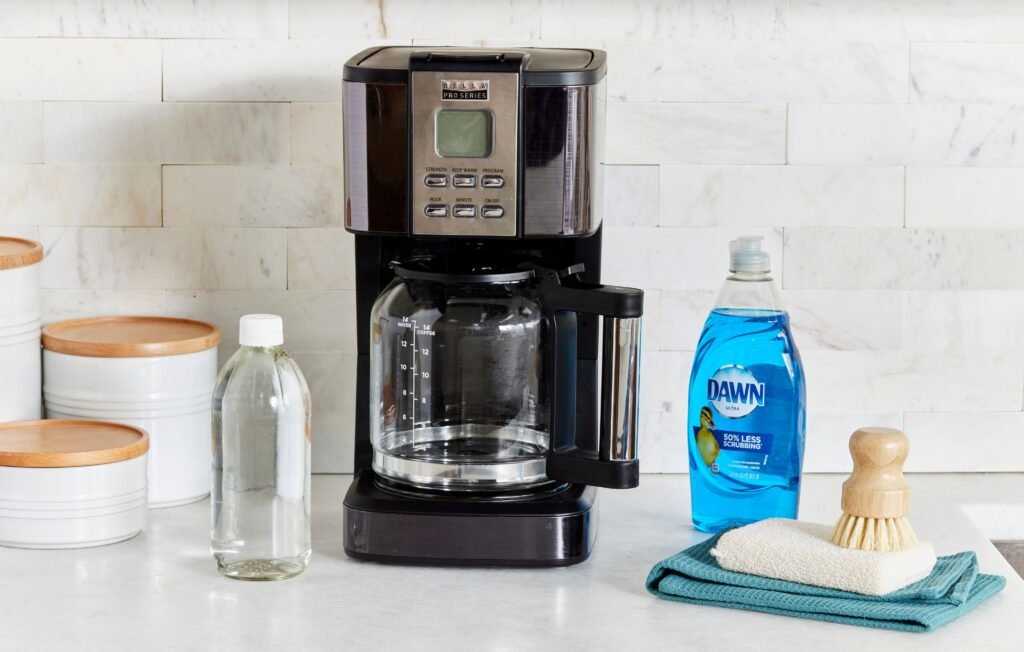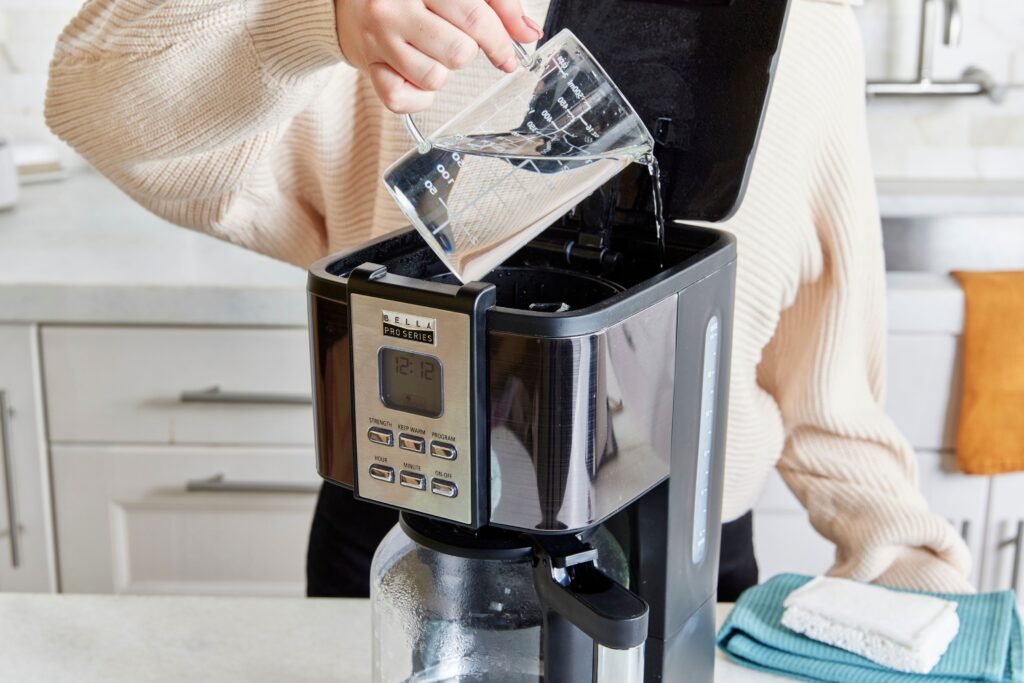Have you ever wondered how to keep your coffee maker as fresh and functional as the day you first brought it home? Cleaning your coffee maker regularly ensures it brews great-tasting coffee and extends its lifespan. But what exactly can you mix to clean your coffee maker effectively?

Why Cleaning Your Coffee Maker is Important
Maintaining your coffee maker involves more than just brewing a pot of coffee and running it through an occasional rinse. Over time, coffee makers can accumulate hard water deposits, residual oils from coffee, and even mold or bacteria. These unwanted substances not only affect the taste of your coffee but can also impede the functionality of your machine.
Indicators That Your Coffee Maker Needs Cleaning
Before diving into the different cleaning solutions you can use, it’s essential to recognize the signs that indicate your coffee maker needs a thorough cleaning. Here are some common indicators:
- Strange Smells: If your coffee starts to have an unusual odor, it might be time to clean your coffee maker.
- Slower Brewing: A slow brewing process often points to mineral build-up in your coffee maker.
- Bad Tasting Coffee: If your coffee tastes off, it could be due to residue and build-up affecting the flavor.
- Visible Build-up: Any visible residue or mineral deposits in your coffee maker should prompt a cleaning.
Common Household Cleaning Solutions
Vinegar and Water
A mixture of white vinegar and water is one of the most effective and widely-used methods for cleaning a coffee maker.
How to Use:
- Prepare the Mixture: Mix equal parts white vinegar and water to create the cleaning solution.
- Fill the Coffee Maker: Pour the mixture into the water reservoir of your coffee maker.
- Run a Brew Cycle: Start a brew cycle, but halfway through, turn off the coffee maker and let the solution sit for about 30 minutes.
- Complete the Cycle: Turn the coffee maker back on and finish the brew cycle.
- Rinse: Run two to three more cycles with just water to ensure all the vinegar is rinsed out.
Lemon Juice
Lemon juice acts as a natural disinfectant and can be used similarly to vinegar for cleaning your coffee maker.
How to Use:
- Prepare the Mixture: Mix one part lemon juice with three parts water.
- Fill the Coffee Maker: Pour the mixture into the water reservoir.
- Run a Brew Cycle: Complete a normal brew cycle.
- Rinse: Run at least two cycles with just water to eliminate any lemon residue.
Baking Soda
Baking soda is excellent for removing odors and is a gentle abrasive that can help scrub your coffee maker’s interior.
How to Use:
- Prepare the Mixture: Dissolve a quarter cup of baking soda in one cup of warm water.
- Fill the Coffee Maker: Pour the mixture into the water reservoir.
- Run a Brew Cycle: Start and complete a brewing cycle.
- Rinse: Run a couple of cycles with just water to remove any baking soda remnants.
Hydrogen Peroxide
Hydrogen peroxide can serve as a potent cleaner for your coffee maker, helping to kill mold and bacteria.
How to Use:
- Prepare the Mixture: Mix one part hydrogen peroxide with two parts water.
- Fill the Coffee Maker: Pour the mixture into the water reservoir.
- Run a Brew Cycle: Complete a normal brew cycle.
- Rinse: Ensure thorough rinsing by running at least two cycles with just water.
Commercial Coffee Maker Cleaners
If you prefer a ready-made solution, commercial coffee maker cleaners are available. These products are specifically designed to clean coffee makers effectively and are easy to use.
How to Use:
- Follow Instructions: Each commercial product will come with specific usage instructions. Follow these carefully for the best results.
- Rinse: Always run a couple of cycles with just water after using any commercial cleaner to make sure no chemical residues remain.
Cleaning Specific Parts of Your Coffee Maker
Different parts of your coffee maker may require special attention. Here’s how you can clean each component:
Coffee Pot and Carafe
These parts can accumulate stains and build-up over time.
Cleaning Methods:
- Hot Soapy Water: Soak in hot, soapy water, and scrub with a soft brush.
- Vinegar and Baking Soda: Mix vinegar and baking soda for an extra cleaning boost, letting it fizz before scrubbing.
Filter Basket
The filter basket can harbor old coffee grounds and oils.
Cleaning Methods:
- Hot Soapy Water: Regular washing with hot soapy water should suffice.
- Vinegar Soak: For a deeper clean, soak the filter basket in a vinegar solution before rinsing thoroughly.
Water Reservoir
Mineral deposits often build up in the water reservoir.
Cleaning Methods:
- Vinegar Solution: Fill with vinegar solution and let sit for a few hours, then rinse thoroughly.
- Commercial Descaler: Use according to the instructions provided with the product.
Exterior Surfaces
Don’t neglect the exterior surfaces of your coffee maker, which can get grimy with splashes and spills.
Cleaning Methods:
- Damp Cloth: Wipe down with a damp cloth and mild soapy solution.
- Sanitizing Wipes: Use sanitizing wipes designed for kitchen appliances, ensuring they are safe for your coffee maker’s material.

How Often Should You Clean Your Coffee Maker?
To maintain your coffee maker’s performance, you should clean it regularly. Here’s a suggested cleaning schedule:
| Cleaning Task | Frequency |
|---|---|
| Rinse with Water | After every use |
| Clean Carafe/Water Tank | Once a week |
| Deep Clean (Vinegar) | Once a month |
| Replace Water Filter | According to the manufacturer’s recommendation |
Following this schedule will ensure your coffee maker remains in top condition and produces the best-tasting coffee.
Troubleshooting Cleaning Problems
Persistent Odors
If unpleasant odors persist even after cleaning, try running an additional cycle with vinegar or lemon juice. Be sure to rinse thoroughly afterward.
Stubborn Stains
For stubborn stains on the carafe or coffee pot, let it soak overnight with a mixture of vinegar and baking soda. This combination can help lift stubborn build-up and stains.
Persistent Mineral Build-Up
If mineral build-up continues to be a problem, you may need to use a commercial descaler. These products are formulated to dissolve stubborn minerals that regular vinegar solutions can’t handle.

Natural vs. Commercial Cleaners: Which is Better?
Both natural and commercial cleaners have their pros and cons.
Natural Cleaners
Pros:
- Eco-Friendly: Common household items are usually more environmentally friendly.
- Availability: You likely already have these items in your pantry.
- Safety: Lower risk of exposure to harsh chemicals.
Cons:
- Strength: Natural cleaners may not be as potent as commercial ones.
- Time: May require more frequent cleaning.
Commercial Cleaners
Pros:
- Effectiveness: Often more powerful and faster at removing build-up.
- Convenience: Easy to use with clear instructions.
Cons:
- Cost: Typically more expensive than household items.
- Chemical Exposure: Higher risk of exposure to potentially harsh chemicals.
Choosing between natural and commercial cleaners depends on your specific needs and preferences. If you’re looking for a quick, potent solution, commercial products might be the best choice. However, if you prefer a natural, eco-friendly approach, household items like vinegar and baking soda are excellent options.
Final Tips for Maintaining a Clean Coffee Maker
- Use Filtered Water: To minimize mineral build-up, consider using filtered or distilled water in your coffee maker.
- Empty Grounds Promptly: Empty and rinse the coffee grounds immediately after brewing to prevent mold and bacteria growth.
- Regular Cleaning: Stick to a regular cleaning schedule to keep your coffee maker in optimal condition.
- Store Properly: When not in use, ensure the coffee maker is stored in a clean, dry place to prevent dust and grime build-up.
By incorporating these maintenance tips into your routine, you’ll enjoy better-tasting coffee and extend the lifespan of your coffee maker. Fresh, delicious coffee awaits you every morning with a well-maintained machine.
Cleaning your coffee maker doesn’t have to be a daunting task. With the right mixture of common household items, you can easily keep your coffee maker clean and running smoothly. So next time you’re tempted to hold off on cleaning, remember the benefits: better tasting coffee, improved machine performance, and ultimately, a more satisfying coffee experience.
Now that you know what you can mix to clean your coffee maker, try these methods out and enjoy the refreshing taste of well-brewed coffee.

